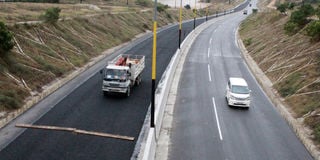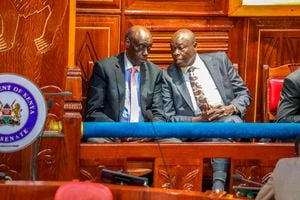
A section of the newly-finished Dongo Kundu Bypass in Mombasa.
Ruguru in my local language means rainy uplands, often the regions adjoining the forests. Itherero means ‘low land’, often with semi-arid conditions.
A long time ago, before the coming of the white man, ruguru people would travel to itherero seeking food. It appears indigenous people's staple food tended to grow better in the lower regions. Hunger was therefore afflicting uplands people more, according to folklore.
But the Europeans came and introduced cash crops.
Things changed. Ruguru cash crops were tea and coffee. Itherero did not have either. Ruguru people prospered more.
But recently there has been an economic upswing in the lower regions. Lower regions have a higher rate of urbanisation and settlements.
Land prices have gone up. It is now more profitable to own land in the lower regions.
And that is the nature of economic development. Ups and downs. Regions to regions.
The moral point of the above illustration is that all regions have economic potential.
Cash crops have made ruguru do well. Urban settlements are now making itherero do well.
The trick to equitable regional development is to identify how to harness hidden regional economic opportunities. And that calls for specific state interventions and planning.
In 1965, Kenya's founding fathers adopted the Sessional Paper No. 10 of 1965 entitled "The African Socialism and its application to planning in Kenya".
It established the principle of state-directed development.
However, the paper is criticised for it's inadequate focus on arid and Coastal regions of the country. Indeed hidden economic opportunities lie in these two regions.
We start with the coastal regions. Liverpool, Rotterdam, Lisbon and Venice are prosperous European coastal cities. Paris and Moscow are where they are because of the navigability of their adjoining rivers.
Tokyo in Japan, Mexico City in Mexico, Sao Paulo in Brazil, New York and Los Angeles in USA, Calcuta in India and Shangai in China are all coastal cities. Dar Es Salaam in Tanzania is bigger than it's interior capital city of Dodoma.
Blue economy
Coastal cities tend to prosper more generally worldwide due to proximity to blue economy resources like fishing. Tourism is also a key driver of prosperity.
But importantly, coastal cities are the gateway to international heavy cargo trade.
For countries, to reap maximum returns to their coastal regions, certain specific interventions have had to be done.
Infrastructural projects like roads and energy make coastal regions competitive. That is why, for example, Kenya's Dongo Kundu bypass Highway that connects Mombasa mainland west to Mombasa mainland south was very important.
China's reforms and opening-up policy of 1980's had coastal cities at the forefront of this new economic pivot. Special Economic Zones were established in various coastal cities including coastal cities of Tianjin, Shanghai and Guangzhou. Export-oriented Companies were encouraged to set up businesses in these coastal cities.
These advantages make exporting easier as international transport corridors lie on nearby adjoining sea.
In Kenya, coastal cities of Lamu, Kilifi, Mombasa and Malindi ought to receive targeted interventions to harness these unique opportunities. Their prosperity would pull Kenya's hinterland upwards.
Northern regions of Kenya have one important factor of production in abundance. Land.
That presents economic opportunities that require the availability of large tracts of land. That include large-scale farming.
Israel has developed agriculture in arid conditions by pioneering in water preservation.
Australia's hinterland has harsher climatic conditions than Kenya's Northern areas but it's agriculture is way superior to ours.
Kenya needs to identify what crops can grow in these regions and incentivise farmers. Northern Kenya can be our foie basket. Examples of drought-resistant crops include sorghum and mangoes, which have a ready market.
We need to relocate public facilities that lie in pricey real estate locations elsewhere. Examples include prisons.
Towns in Northern regions have the best opportunities to establish well-ordered urban settlements due to the abundance of land.
Urban settlements in large towns like Nairobi have tended to grow in a sprawling manner due to a lack of planning.
Irungu Kangata is the Governor of Murang''a County. Email [email protected].










